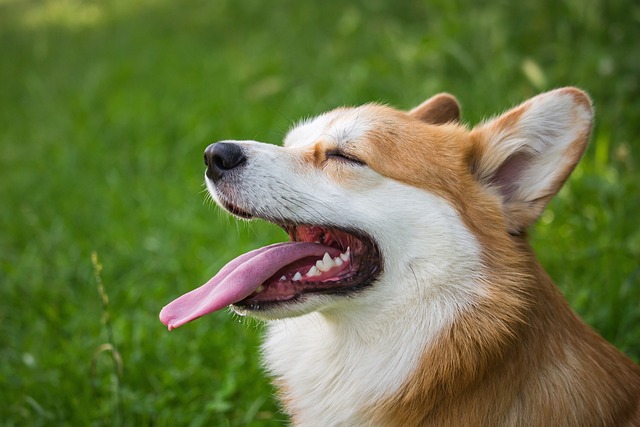
What vitamin is good for dogs' skin
Seeing your dog constantly scratch or noticing dry, flaky skin can make you wonder if a simple vitamin might be the solution.
You've probably heard the classic advice that dogs shed heavily in spring and fall, but if you're finding fur tumbleweeds year-round in your Arizona home or your Minnesota Lab seems perpetually fluffy, you're not imagining things. Shedding isn't just tied to the calendar; it's a biological response to environmental cues like daylight and temperature shifts. While many pups do experience significant coat blowouts during seasonal transitions, the "peak shedding month" varies wildly across the U.S. and even depends on whether your dog lives in a climate-controlled apartment or roams a rural yard. Your dog’s fur is essentially a weathervane.
Think of daylight as the conductor of your dog's shedding orchestra. As days lengthen in spring or shorten in fall, changes in sunlight exposure affect melatonin production, signaling the body to grow a new coat or ditch the old one. Temperature plays a supporting role – a sudden warm snap in March can trick a Siberian Husky in Colorado into shedding early, while humidity in Florida keeps some coats thinner year-round. This is why "dog shedding by climate" matters more than generic timelines; indoor dogs with artificial lighting might shed moderately all year, while farm dogs sync sharply with nature's rhythms.
Regional differences are stark. Up north in Maine or Michigan, you'll often see explosive "blowing coat" events in late spring as dogs ditch heavy winter undercoats before summer – think May and June fur storms. Contrast that with Texas or Southern California, where milder winters mean less dramatic seasonal shifts; breeds like German Shepherds might shed consistently heavier from February through October, with slight peaks during brief temperature dips. Coastal Pacific Northwest dampness can prolong shedding cycles compared to arid Arizona, where indoor heating in winter creates a mini-shedding season regardless of outdoor temps. Spotting these "regional dog shedding patterns" helps manage expectations.
Breed genetics interact dramatically with location. Double-coated breeds like Golden Retrievers or Malamutes in chilly Vermont will hold thick fur longer but undergo intense spring shedding, sometimes needing professional de-shedding tools by April. Yet that same Malamute relocated to Georgia might shed lighter but almost constantly due to less defined seasons. Short-haired breeds like Beagles shed steadily everywhere but intensify during local temperature spikes. Poodles or Bichons, bred for consistent coats, shed minimally regardless of region – a perk for apartment dwellers in New York facing "when do dogs shed the most in the US" concerns with limited vacuuming patience.
Managing this requires a tailored approach. If you're battling year-round fur in Atlanta, daily brushing with an undercoat rake during humid months prevents mats and captures loose hair before it carpets your sofa. Northern owners facing spring blizzards of fur should ramp up brushing to every other day in May, using a slicker brush followed by a deshedding tool – always gentle to avoid skin irritation, aligning with U.S. animal welfare norms against harsh grooming. Diet matters too: omega-3 supplements support skin health during heavy shedding phases. For apartment dogs, consider air purifiers and washable sofa covers; it’s practical and respects shared living spaces when fur travels to communal hallways.
Ultimately, tracking your dog's unique "dog shedding cycle explained" through local weather beats guessing months on a calendar. Notice if shedding surges after the first warm week or when daylight saving time shifts. That Alaskan Malamute in Seattle won’t shed like her cousin in Anchorage, and your neighbor’s Chihuahua’s shedding rhythm will differ from your Collie’s. Tune into your dog’s coat changes, pair it with your zip code’s climate quirks, and you’ll crack the code – turning frustration into proactive, fur-taming action.

Seeing your dog constantly scratch or noticing dry, flaky skin can make you wonder if a simple vitamin might be the solution.

If you’re a new dog parent in the US—maybe you’re sitting on your Portland apartment couch, staring at your 1-year-old Australian Shepherd

If you’re a new dog parent in the US—maybe you’re sitting on your Atlanta apartment floor, holding your 6-week-old Beagle puppy, Daisy, who’s curled up in your lap

If you’re a new dog parent in the US—maybe you’re standing in your Denver apartment’s kitchen, staring at a bag of high-quality puppy kibble and a bottle

Seeing your puppy grow daily is amazing, and it’s natural to want to give them every advantage, including supplements.

Brown stains on white dog fur aren’t just unsightly—they can also hint at underlying issues like tear duct irritation or poor grooming habits, which matter even more when you’re following local pet care laws.